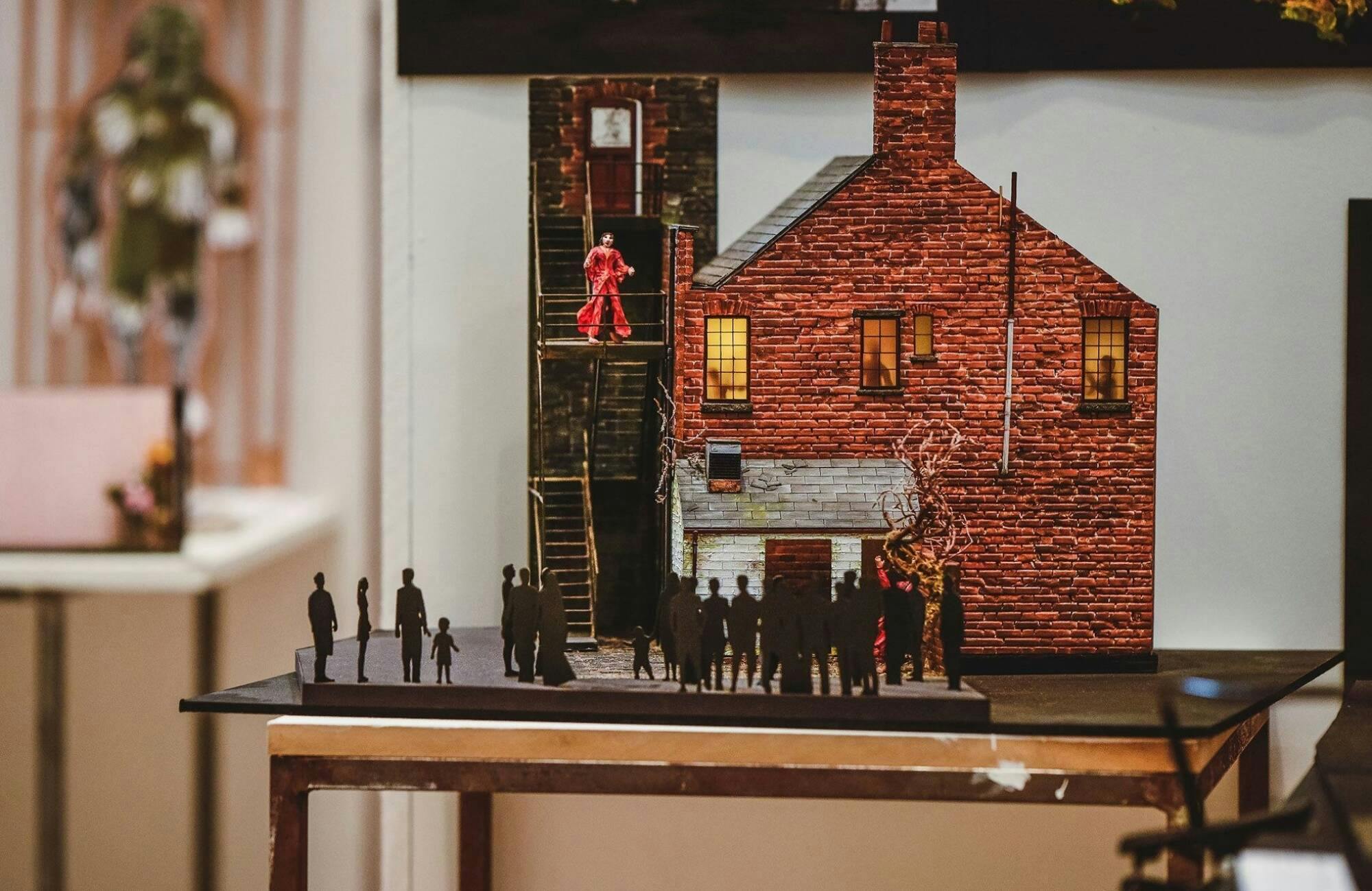
Welcome back Balance: The new improved exhibition

Sean Crowley, the Director of Drama and Head of Design for Performance here at RWCMD has taken the time to talk to us about what Balance is, and how it’s developed for the better post-pandemic:
The Royal Welsh College of Music & Drama Balance exhibition returns after a two-year hiatus due to the pandemic and in some ways, as a very different exhibition.
'Balance is always an annual highlight for the Design department, a celebration of the students’ work across all areas of design, across all College productions.'Sean Crowley
Strangely, the two years without the exhibition, has provided us with a positive chance to evaluate how we can move forward to create a sustainable and accessible exhibition, fit for future purposes.
So, what’s changed?
Balance historically was the final moment in the students’ academic assessment.
Since 2020 we’ve looked at how we can make this a more relaxed and inspiring experience for the students as they approach their final showcase. Avoiding that last minute stress by using alternative assessment methods through the website and digital galleries, to create a more logical and kinder way forward. The website forms the assessed component and any possible stress or challenges are managed through structured tutorials.
'Their learning is focused on creating a future-facing web presence and not on the anxieties of preparing for an opening night. The exhibition, therefore, has become a true celebration of the students’ transition into industry. The students and tutors work together to showcase the designers’ best possible work.'Sean Crowley
The exhibition has also changed in terms of sustainability
Previously the most effective way was using full MDF (Medium Density Fibre) boards that hinged together. Each exhibition used approximate 200 panels per year. These panels, where possible, were recycled and used in future College productions but often a lot of waste had to go into skips.
MDF is a notoriously difficult material to recycle because it’s a composite of wood fibre and adhesive, which can be hard to separate. Even though we found ways of reusing some of the boards, eventually all of them probably made their way to landfill sites.
'A priority moving forward was to find a way of realising the exhibition using materials that were recyclable and sustainable.'Sean Crowley
This has led to the creation of steel-framed panels that are designed to stack within a standard container at our Llanishen workshop.
The future of Balance: sustainable and accessible
The frames we’ve created will be reused every year, immediately reducing the need to manufacture new panels for each exhibition. They have a mounted panel of sustainable and recyclable material made of compressed wheat which will hopefully have a life span of at least five years, if not longer.
They can be detached and stored separately which means we will have a significant financial saving over the coming years. The design has a hinging system for the adjustment of panel angles and includes threaded holes for the fixings of any lighting and cabling.
We’ve also chosen to use different panel sizes and positions to improve fabrication efficiency and accessibility and all panels are painted with chalk-based paint that contains no toxic substances. The steel frames have even been constructed to include adjustable feet for Bargehouse, Balance’s exhibition space in London with its uneven floors.
'Overall, the design of our new frames allows for an extremely flexible exhibition system which can be suitable for a variety of alternative purposes.'Sean CrowleyDirector of Drama
Encouraging a more sustainable approach
All students have been encouraged to explore the use of sustainable or recycled materials when masking models and mounting pictures. The last of our sheets of foam board has been finished, no display mount has been sprayed, and no zip ties used.
All exhibits and spaces have been created to try and make the work as accessible as possible. Bargehouse still poses the problem of its top two floors, but we’ve introduced QR codes located on the accessible ground floor so that visitors with mobility issues can access the students’ websites.
The final exhibition is an embodiment of what we aspire to be in the College. It represents the breadth of talent across all of RWCMD, celebrating the successes of our students and our ambition for the College as a forward-looking nurturing community.
Reducing our carbon footprint is a journey, and we still have more to do. But this year’s final exhibition takes a big step forward in our aspiration and will make a significant difference for years and years to come.
We hope you enjoy.
Thanks, Sean, for writing this blog – we’ve loved having the exhibition back in the building.









